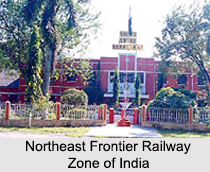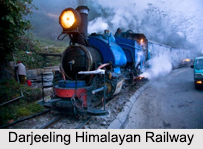 Northeast Frontier Railway Zone of India, abbreviated as N.F. Railway, is a part of the Indian Railways. This Indian railway zone is headquartered at Maligaon, Guwahati. Northeast Frontier Railway serves north eastern India, Bihar and some parts of West Bengal. The General Manager and his assistant, that is, the additional General Manager administer Northeast Frontier Railway.
Northeast Frontier Railway Zone of India, abbreviated as N.F. Railway, is a part of the Indian Railways. This Indian railway zone is headquartered at Maligaon, Guwahati. Northeast Frontier Railway serves north eastern India, Bihar and some parts of West Bengal. The General Manager and his assistant, that is, the additional General Manager administer Northeast Frontier Railway.
History of Northeast Frontier Railway Zone of India
Northeast Frontier Railway Zone of India was formed on 15th of January, 1958. On 14th of April, 1952, two railways systems namely, the Oudh and Tirhut Railway and Assam Railway and the Cawnpore-Achnera Provincial State Railway of Bombay and Baroda and Central India Railway were brought together to create North Eastern Railway. Northeast Frontier Railway was created out of the North Eastern Railway Zone of India, with the aim to take care of the transportation needs of the north eastern Indian states in an enhanced way. All the railway lines east of Katihar, came under the control of Northeast Frontier Railway, after its formation.
 Divisions of Northeast Frontier Railway Zone of India
Divisions of Northeast Frontier Railway Zone of India
Divisions of Northeast Frontier Railway Zone of India are Katihar Railway Division, Alipurduar Railway Division, Lumding Railway Division, Tinsukia Railway Division and Rangiya Railway Division. Katihar Railway Division is headquartered at Katihar in Bihar. Alipurduar Railway Division is headquartered at Alipurduar in West Bengal. Lumding Railway Division is headquartered at Lumding in Assam and has five Indian railway stations under it. Tinsukia Railway Division is headquartered at Tinsukia in Assam. Rangiya Railway Division is headquartered at Rangiya in Assam. Katihar, Alipurduar, Lumding and Tinsukia divisions were created on 15th of January 1958. Rangiya Railway Division was created on 1st of April, 2003.
Development of Northeast Frontier Railway Zone of India
Northeast Frontier Railway Zone of India has bagged significant achievements since its formation. It has successfully completed its track-linking project in Agartala- Jogendranagar-Jirania- Brigudaspara railway route. Considering the Katihar-Jogbani GC Project, Northeast Frontier Railway attained significant success. The Senchoa-Silghat GC Project of Northeast Frontier Railway and the project of Siliguri Diesel Shed were successfully completed. The railway has completed the project of sick line shed and freight examination facilities at New Bongaigao. Northeast Frontier Railway has proved to be supreme at its services in the north eastern region of India, ever since its formation. In this regard it is important to note that complicated terrain restricts the rail network expansion of the Northeast Frontier Railway. Assam is known to be the only Indian state with proper rail network. Broad gauge network is not present in many parts of the railway. The railway lines are so outdated that the speeds at some parts have been limited to a maximum of 30 kilometer per hour.















